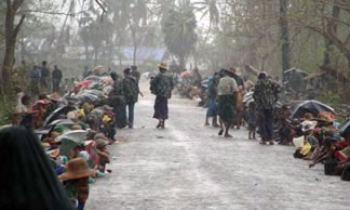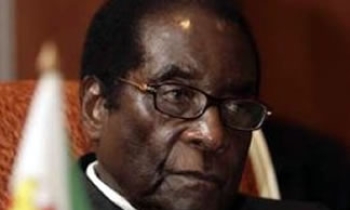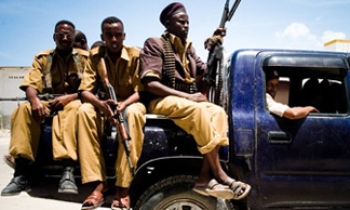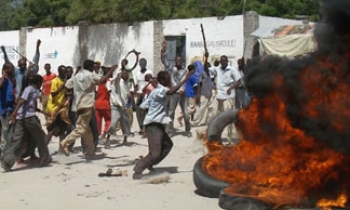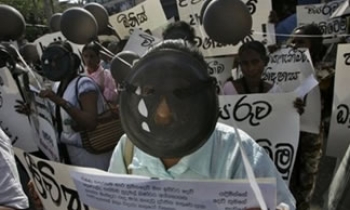ISLAMABAD: Despite remaining independent, the media in Pakistan continued facing outbursts of intolerance by the security agencies and a section of the establishment and Pakistan topped the list of abductions and killings of journalists during the year, according to a report released by South Asia Free Media Association on Thursday.
The tribal areas have been turned into no-go areas for journalists. The situation in Balochistan and interior Sindh remained quite dangerous for journalists. The government further amended the PEMRA law to curtail the freedom of electronic media and weighed its options on bringing in yet another black law, PAPRA, to contain the print media, according to a report released by Secretary General Amtiaz Alam on South Asian Media: Continuing to Negotiate with Difficulties on Thursday at a function organized by SAFMA.
Despite some advances in press freedom, Pakistan tops the list of murdered journalists, where four journalists were killed followed by Sri Lanka where two Tamil journalists and five media employers were killed. Two journalists each (two Germans and two Indians) were killed in Afghanistan and India. In Nepal one journalist was killed, whereas in Bangladesh no journalist was killed, although in terms of threats to journalists Bangladesh still remains a dangerous place for the profession. The Maldives still remain a prison of journalists and there is no let up in curbs on the press.
On the legal front, except for India where information law was further relaxed, there was no significant development in terms of improvement in press laws. Although SAFMA national chapters have proposed amendments to the media laws in various countries of South Asia, the authorities have not taken any positive step in ensuring legal coverage to access to information and a free press. Cross border free flow of information, free movement of journalists and media products continued to suffer from various restrictions. Member countries of SAARC continued to ignore the urgency to overcome information deficit in the region. SAFMA came under attach in the SAARC for supporting press freedom in Nepal.
In Pakistan the year 2006 took lives of four journalists while performing their professional duties. A journalist Hayatullah, who was abducted in December 2005 allegedly by intelligence agencies in Waziristan for an expose, was found dead on June 16 sending out signals of insecurity to other journalists. Muneer Ahmed Sangi, a photographer of Sindhi-language daily Kawish and cameraman of TV channel KTN, was shot dead while covering a clash between two tribes in Larkana on May 29. This killing was alarming for media organisations, which send their correspondents in the field without security precautions for their protection. In Dera Ismail Khan, Maqbool Hussain Siyal, district correspondent of the Online news agency, was gunned down by unidentified assailants on his way to meeting PPP leader Nawab Azek on September 14. The fourth killing was that of Malik Muhammad Ismail, editor of a national news agency Pakistan Press International (PPI) Islamabad. The motive behind his killing could not be ascertained, the report said.
The impunity in these killings has undoubtedly scared the journalists in Pakistan. Journalists' massive protests and campaigns could not bear fruit and no culprit could be punished. Journalists protested against the harassment, abduction and torture. Tribal areas especially Wana and Bajour have got the status of "no-go areas" for journalists where harassment by intelligence agencies due to the military operation remained at its peak. Rather than providing any security, law enforcement agencies worked as a big threat to journalists' security and an impediment to their work, the report said.
During the year, PEMRA continued its operation against illegal FM stations in the tribal areas and shut down 156 stations which were in use of religious people allegedly promoting extremism and intolerance and spreading hatred and anti-state statements.
The PEMRA law was further amended to tighten noose around private television channels. SAFMA National Conference in Karachi demanded repeal of the PEMRA ordinance.
Assaults on journalists continued either by political people or law enforcement agencies. Journalists were beaten up on the orders of special secretaries to Sindh chief minister in the Senate building. Superintendent of Police in Peshawar beat up Wahidur Rehman Khalil, a correspondent of the AVT Khyber television channel, covering killing of a tribesman. In Lahore, three electronic media journalists form the ARY TV were thrashed by police as they were on their way to cover a public meeting. The Punjab government, through a district police official, allegedly forcefully stopped airing of the ARY channel transmissions throughout the province for five days. The police allegedly coerced the ARY management into respecting the ruling Punjab family. A reporter of Daily Sham, Omar Soomro, was tortured and humiliated after being kidnapped by armed men in Umerkot. He was shown head and moustaches shaven on a cable television channel by supporters of union nazim, the report said
Media organisations and press clubs also faced the wrath of those with conflicting opinions. Members of Pakistan Muslim League attacked the Peshawar Press Club to prevent three of its dissident members from holding a press conference. Several journalists were injured in the attack, the report said.
Given the importance of press freedom and the issues of media and their content, SAFMA has proposed to all stakeholders in media, including the bodies of journalists, editors and publishers, to form a much more broad-based media monitoring body that will not only monitor attacks on the press, but also audit media content. South Asia Press Commission (SAPC) is being formed in consultation with all journalists and media bodies in the countries of the region. The
SAPC will be formed in each country before March 30, 2007, and regional commission will be formed on April 1, 2007, in New Delhi. This Commission, backed by SAFMA, will set it sown agenda and will be releasing its national and regional reports. SAFMA is proud of setting the ball rolling, now it is the responsibility of media industry and working journalists to carry forward the agenda of press freedom and self-accountability.
Overall picture of media, both in terms of industry and professional freedom, was much better this year than the last year. While electronic media continued to expand in almost all countries of the region, on-line media set new records of increasing cyber citizenry. With the invasion of multi-media, print media also adopted new ways to adjust with the changing times. Most remarkable development was the democratic revolution in Nepal that also freed the media from the clutches of censorship and official controls. The Nepalese media deserve our gratitude for having valiantly fought for press freedom during the King's authoritarian reign. But there are countries and areas that remain under the darkness of curbs on press freedom.
Corporatization of media, however, remained the dominant trend in the region with content and format being decided by the advertisers. Public sector media, despite competitive pressure from the private sector, remained in government control without responding to the imperatives of public service, openness and pluralism. In terms of inter-state relations in the region, media with few exceptions followed official line. Indian and Bangladeshi media remained most embedded to 'nationalist' stance of their establishments. If the media in Sri Lanka got further divided on ethnic lines, it remained extremely polarized in Bangladesh.

